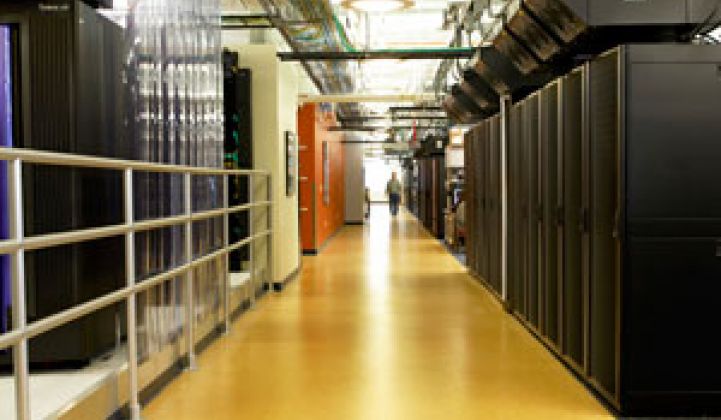Sun Microsystems Inc. is going to save about $1 million a year on electricity costs at its new high-efficiency data center – and it has a new consulting service for anyone who'd like to find out how the company did it.
That's the gist of Sun's news Monday on its latest high-efficiency data center, this one in Broomfield, Colo. Like Sun's flagship data center in Santa Clara, Calif., and two others in the United Kingdom and India, it combines new equipment and new building power, backup and cooling systems to cut down on the space required, electricity consumed and money spent, both in capital costs and operations.
Of course, Sun – like others seeking to cut power consumption in a business that takes up about 1.5 percent of the country's electricity – used some design features that are becoming standard for data center efficiency, including more efficient power and cooling systems and an uninterruptible power supply from flywheels rather than batteries (see Advanced Data Centers Claims Super-Efficiency).
But the biggest share of power and money savings – about a million kilowatt-hours per month – came from shrinking two older data centers of about 500,000 square feet into a new one about a fifth the size, said Mark Monroe, Sun's director of sustainable computing.
Sun's in-house efforts to cut power consumption will also be available to others looking for advice, he added. Sun is adding corporate strategy, design and construction advice to the list of data center efficiency consulting services it started up about a year ago.
"Running a sustainable green IT organization is a great way to save money," Monroe said. "A lot of these efficiency measures go to the bottom line."
Sun has also been populating its new data c enters with the same energy-efficient servers and storage devices it's selling to customers (see Sun Shoots for Power Reduction in Data Storage).
But the company – known for coming up with innovative ways to keep up with much larger competitors in its industry – is going to have plenty of competition in the data center efficiency business as well.
Back in 2007, Hewlett-Packard announced it would reduce the combined energy consumption of its operations and products 20 percent in the next three years. That same year, IBM announced it would spend $1 billion per year on new products and services for data-center efficiency (see IBM Gives Extra Credits).
But Sun's big push into data center efficiency services for others came as a result of the company's own attempts to save money in the midst of its financial troubles from several years back, said Ken Brill, executive director of the Uptime Institute.
"Sun was in desperate financial straits, and they launched this effort to save money," Brill said. "By refreshing their own technology, that's how they got started."
Monroe didn't dispute this.
"We're in a for-profit business," he said. "We've got to make the best use of our resources." Sun has invested about $250 million in its data center efficiency programs over the past fours years, and paybacks on the investments are typically about a year, he said.
Investments like these will be needed if companies are to avoid what Brill predicted could be "a looming crisis" in data center costs, Brill said.
About $15 billion in new data center space was under construction in the United States last year, he said. If energy efficiency of those new data centers isn't improved, the industry could see energy consumption grow to 100 billion kilowatt-hours by 2012 – and that could cost data-center owners as much as $7.4 billion a year, the U.S. Environmental Protection Agency reported (see Data Centers Could Hit ‘Resource Crisis').
Building more efficient data centers doesn't just save on electric bills, Brill added. More efficient data centers are smaller and use less equipment and power infrastructure, meaning they cost less to build as well – the difference between cutting a $4 million per year electricity bill in half and cutting a $200 million construction bill in half.
Google, which has been making a lot of efforts to cut its own energy use and get others on board, said it's made its data centers more efficient mostly through changes in building infrastructure, rather than in the data center equipment itself.
One way to measure that facility efficiency is with a power use effectiveness, or PUE, ratio. That's a measure of the total amount of power consumed by a data center divided by the amount used for computing. Sun's Broomfield
By comparison, NetApp landed a $1.4 million efficiency rebate from Pacific Gas & Electric last month for a PUE of 1.3 at its Sunnyvale, Calif. data center, and Google is claiming an average PUE of 1.21 for six of its large data centers.
But given that existing data centers also need to be made efficient as well, equipment should be getting a close look as well, Brill said.
And, before getting into more efficient equipment, "The first thing people should do is turn off the stuff they don't need," he said. So-called "comatose" servers that sit idle can make up 15 to 30 percent of a data center's equipment power use, he said.



